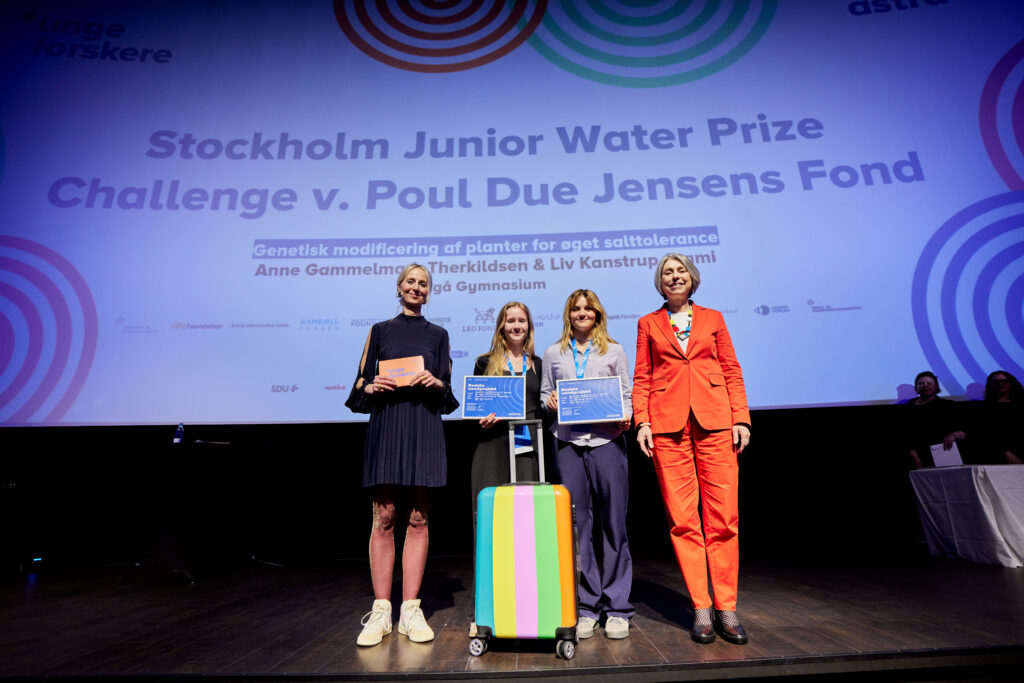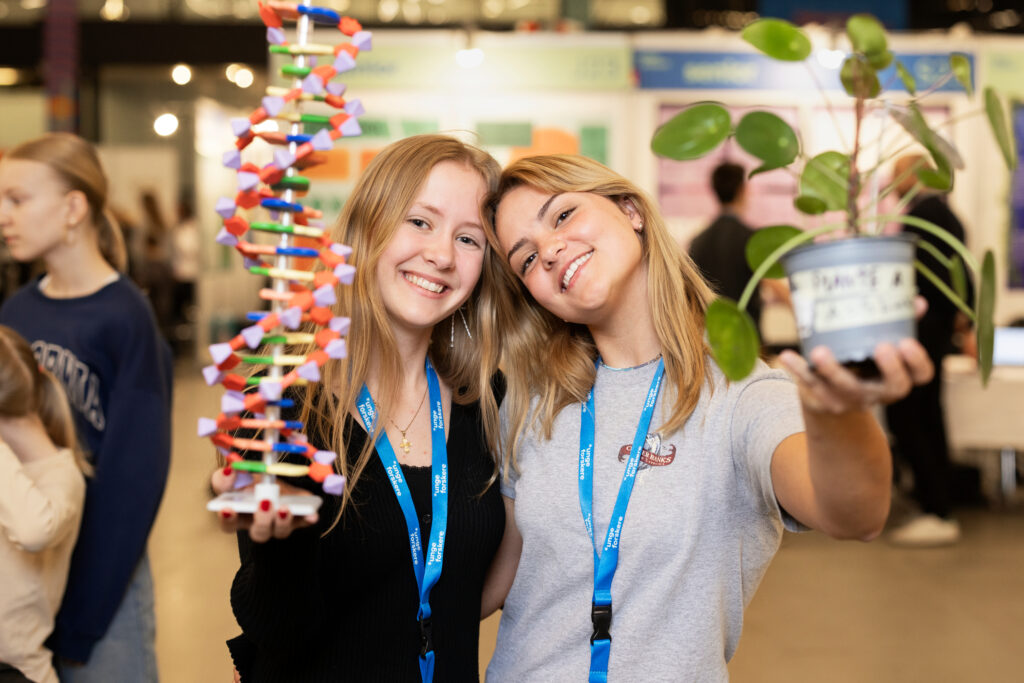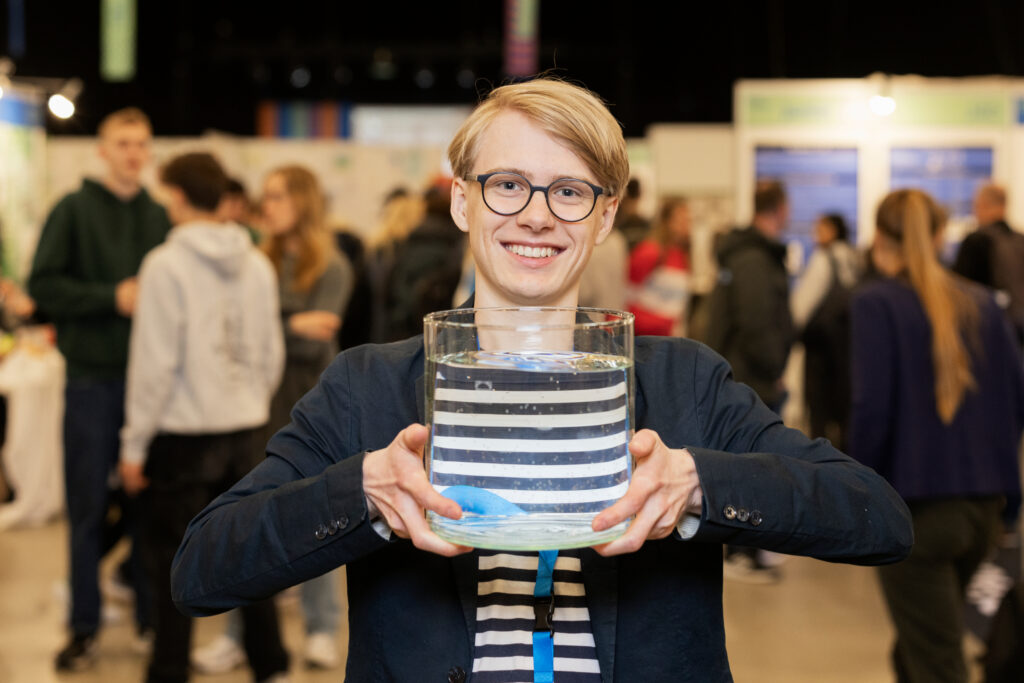Climate and water are closely linked. Climate change increases the risk of droughts and floods. Floods often cause saltwater intrusion, which increases the salt content of the soil, reduces the amount of fresh water, and contributes to the destruction of plants that cannot tolerate the salt. The issue is the focal point of the project that has sent Liv and Anne from 2.g at Egå Gymnasium from the Danish National Youth Science competition to the Stockholm Junior Water Prize, where they can look forward to becoming part of a strong community with young people from all over the world who are also interested in solving the world’s water challenges.

From left: Biologist and science journalist Lene Friis Frederiksen, winners Anne Gammelmark Therkildsen and Liv Kanstrup Arami and foundation board member Elsebeth Gerner Nielsen. Photo: Thomas Evaldsen.
The theoretical considerations of the project are thorough, and the research question is highly relevant. In their report, the project group explains how salt affects plants and describes why some plants have a greater salt tolerance than others. They propose to genetically modify plants and thereby increase their salt tolerance so that they can tolerate higher sea water, thereby better ensuring food production in a changed world.
One of the strengths of the students' work is the group's reflections, especially on how their idea can affect the environment. They have considered how irrigation with seawater will affect the properties of the soil and the microorganisms living in the soil. They have included a discussion of the legislation that currently exists for the use of genetically modified plants.
“
The project also included various experimental experiments carried out to investigate the response of plants and soil to high salt concentrations. The group also mentions the possibility of using salt-tolerant plants in vertical farming, thereby reducing the need for fresh water for food production.

During the Young Scientists final, the finalists have showcased their project to visitors and jury members at the Science Expo from 21-23 April. Photo: Tor Birk Trads
Strong field of water and climate projects
This year, the foundation’s jury has noticed that there were several really good projects in the field, and therefore it has not been easy to choose who we should send on. The Foundation would therefore like to thank the many young people who have chosen to focus on water and climate issues and particularly highlight the following “runner-up” projects:
- The sound of the drop, where Theodor Sivager from 3rd g at HTX Roskilde has worked with a good and relevant issue, namely how we can create more precise climate models.
- Use of secondary water, where Simon Nguyen, Sebastian Jensen and Peter Nguyen from 2.g at Aarhus Gymnasium look at optimised use of rainwater for toilet flushing instead of drinking water.
In addition, the Foundation hopes that the projects Giving wastewater a second chance, Mussels’ impact on oxygen depletion in Danish waters, Angled photocatalysis, Friction Free Energy and More Efficient CO2 uptake will return strongly next year.

Among the three best projects in the category was also Theodor Sivager fro HTX Roskilde with his project, The Sound of the Drop. Photo: Tor Birk Trads

